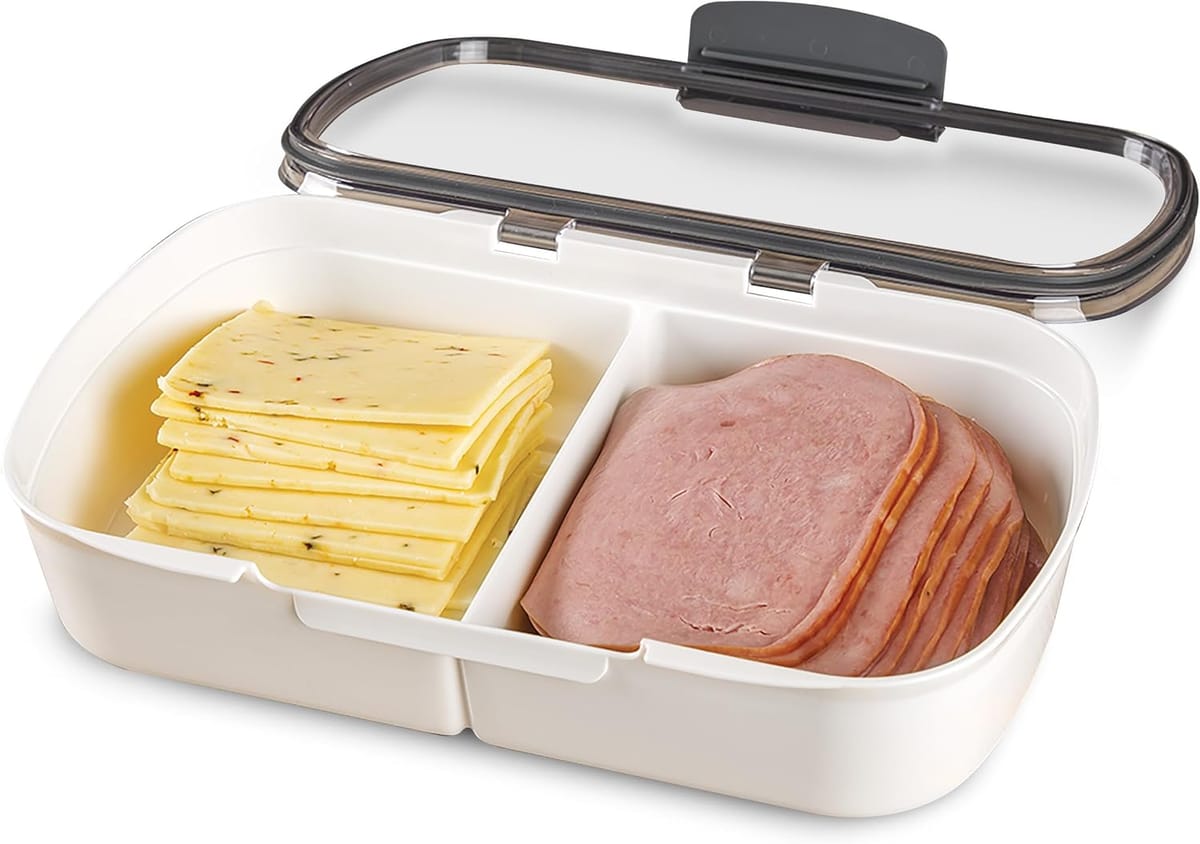Key Takeaways:
- Proper storage techniques can significantly extend the shelf life of lunch meat.
- Understanding the different types of lunch meat helps in choosing the best storage method.
- Regularly checking for signs of spoilage ensures food safety and quality.
Understanding Lunch Meat Varieties
Lunch meat, also known as deli meat or cold cuts, comes in a variety of forms, each with its own storage needs. From turkey and ham to salami and bologna, these meats are a staple in many households. Knowing the type of lunch meat you're dealing with is the first step in ensuring it stays fresh. For instance, cured meats like salami have a longer shelf life compared to fresh turkey slices due to their preservation process.
Different meats have different moisture levels and fat content, which affect how they should be stored. For example, meats with higher fat content, like bologna, can spoil faster if not stored correctly. Understanding these nuances helps in selecting the right storage method, ensuring your lunch meat remains fresh and safe to eat.
The Importance of Temperature Control
Temperature plays a crucial role in preserving the freshness of lunch meat. The ideal temperature for storing lunch meat is below 40°F (4°C). This temperature slows down bacterial growth, keeping your meat fresh for a longer period. Investing in a reliable refrigerator thermometer can help you maintain the right temperature consistently.
It's essential to store lunch meat in the coldest part of your fridge, usually the back or bottom shelf. Avoid placing it in the fridge door, where temperatures fluctuate more frequently. Consistent temperature control is key to preventing spoilage and maintaining the quality of your lunch meat.
Packaging Matters: Choosing the Right Wrap
The way you package your lunch meat can significantly impact its freshness. Airtight packaging is crucial to prevent exposure to air, which can lead to spoilage. Vacuum-sealed bags are an excellent option for extending the shelf life of lunch meat, as they remove air and lock in freshness.
If vacuum sealing isn't an option, consider using resealable plastic bags or airtight containers. Ensure that the packaging is free from any tears or holes, as even a small amount of air can cause the meat to spoil faster. Proper packaging not only preserves freshness but also prevents cross-contamination with other foods in your fridge.
The Role of Humidity in Meat Storage
Humidity levels in your fridge can also affect the freshness of lunch meat. High humidity can lead to moisture buildup, which promotes bacterial growth and spoilage. Conversely, low humidity can cause the meat to dry out, affecting its texture and taste.
To maintain the right humidity levels, consider using a humidity-controlled drawer in your fridge. These drawers are designed to keep moisture at bay, ensuring your lunch meat stays fresh and flavorful. Regularly checking and adjusting the humidity settings can make a significant difference in the longevity of your lunch meat.
Signs of Spoilage: What to Look For
Recognizing the signs of spoilage is crucial for ensuring the safety of your lunch meat. Common indicators include a sour smell, slimy texture, and discoloration. If you notice any of these signs, it's best to discard the meat immediately to avoid foodborne illnesses.
Regularly inspecting your lunch meat for spoilage is a good practice. Even if the meat looks and smells fine, it's essential to adhere to the "use by" date provided by the manufacturer. Consuming spoiled meat can lead to serious health issues, so when in doubt, throw it out.
Extending Shelf Life with Freezing
Freezing is an effective way to extend the shelf life of lunch meat. Most lunch meats can be frozen for up to two months without losing their quality. To freeze lunch meat, wrap it tightly in plastic wrap or aluminum foil, then place it in a freezer-safe bag or container.
Label the package with the date of freezing to keep track of its shelf life. When you're ready to use the meat, thaw it in the refrigerator rather than at room temperature to prevent bacterial growth. Freezing is a great option for those who buy lunch meat in bulk or want to reduce food waste.
The Impact of Slicing on Freshness
The way lunch meat is sliced can also affect its freshness. Thicker slices tend to stay fresh longer than thinner ones, as they have less surface area exposed to air. If you're buying lunch meat from a deli, consider requesting thicker slices to maximize freshness.
If you prefer thinner slices, it's important to consume them more quickly or store them in airtight packaging to prevent spoilage. Understanding how slicing impacts freshness can help you make informed decisions when purchasing and storing lunch meat.
Best Practices for Storing Leftovers
Storing leftover lunch meat properly is essential for maintaining its freshness. After opening a package, transfer the meat to an airtight container or resealable bag. Ensure that the container is clean and dry before use to prevent contamination.
It's also a good idea to label the container with the date the package was opened. This helps you keep track of how long the meat has been stored and ensures you consume it within a safe timeframe. Proper storage of leftovers not only preserves freshness but also reduces food waste.
The Benefits of Regular Cleaning
Keeping your fridge clean is an often-overlooked aspect of maintaining the freshness of lunch meat. Regularly cleaning your fridge prevents the buildup of bacteria and odors that can affect the quality of your food. Aim to clean your fridge at least once a month, focusing on shelves and drawers where lunch meat is stored.
Use a mild detergent and warm water to clean surfaces, and ensure they are thoroughly dried before placing food back in the fridge. A clean fridge not only extends the freshness of your lunch meat but also promotes overall food safety.
Creative Ways to Use Leftover Lunch Meat
If you find yourself with leftover lunch meat nearing its expiration date, consider incorporating it into creative recipes. Lunch meat can be used in a variety of dishes, from sandwiches and wraps to salads and pasta. This not only prevents waste but also adds variety to your meals.
For example, leftover turkey slices can be added to a Caesar salad for a protein boost, while ham can be diced and used in a quiche or omelet. Experimenting with different recipes can help you make the most of your lunch meat and keep your meals exciting.
5 of the Top Deli Keepers for Your Fridge Available on Amazon
We hope you find your next awesome thing from the list below! Each product was independently selected by our editors. Some may have been sent as samples for us to fiddle with, but all opinions in this article are our own. Oh, and FYI — AnnesAnalytics may collect a share of sales or other compensation from the links on this page if you decide to buy something (that's how we stay in business). Reviews have been edited for length and clarity. Enjoy finding your next awesome thing.
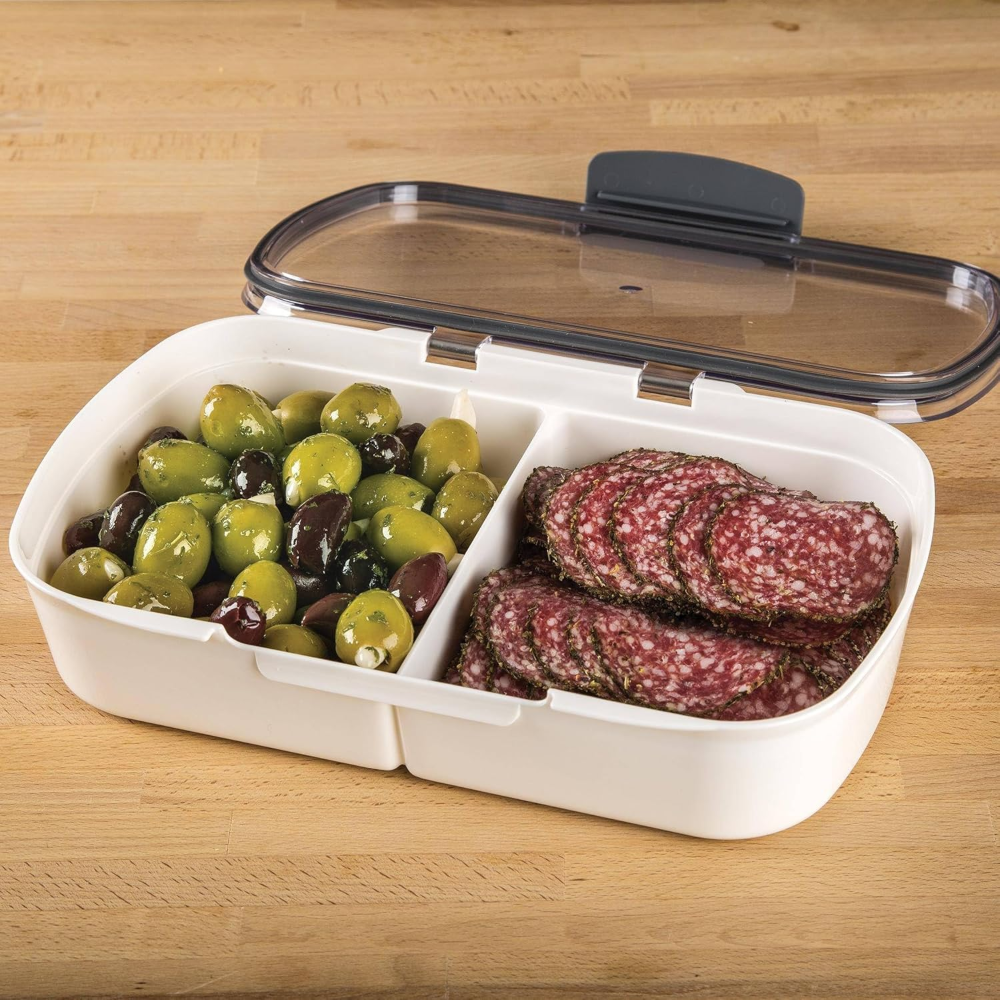
Prepworks Split Deli ProKeeper Air Tight Silicone Sealed Food Storage Container with Clear Dry Erase Compatible Lid
11.75 Inches Long
Why We Love This
Keep meats and cheese fresh longer with the PrepWorks Split Deli ProKeeper. Its airtight seal and strong clasp lock in freshness. Juices drip away thanks to the grooved bottom. Track dates on its dry-erase lid. It holds 1 lb of bacon and is safe to wash in the dishwasher. PrepWorks makes cooking easier for everyone.
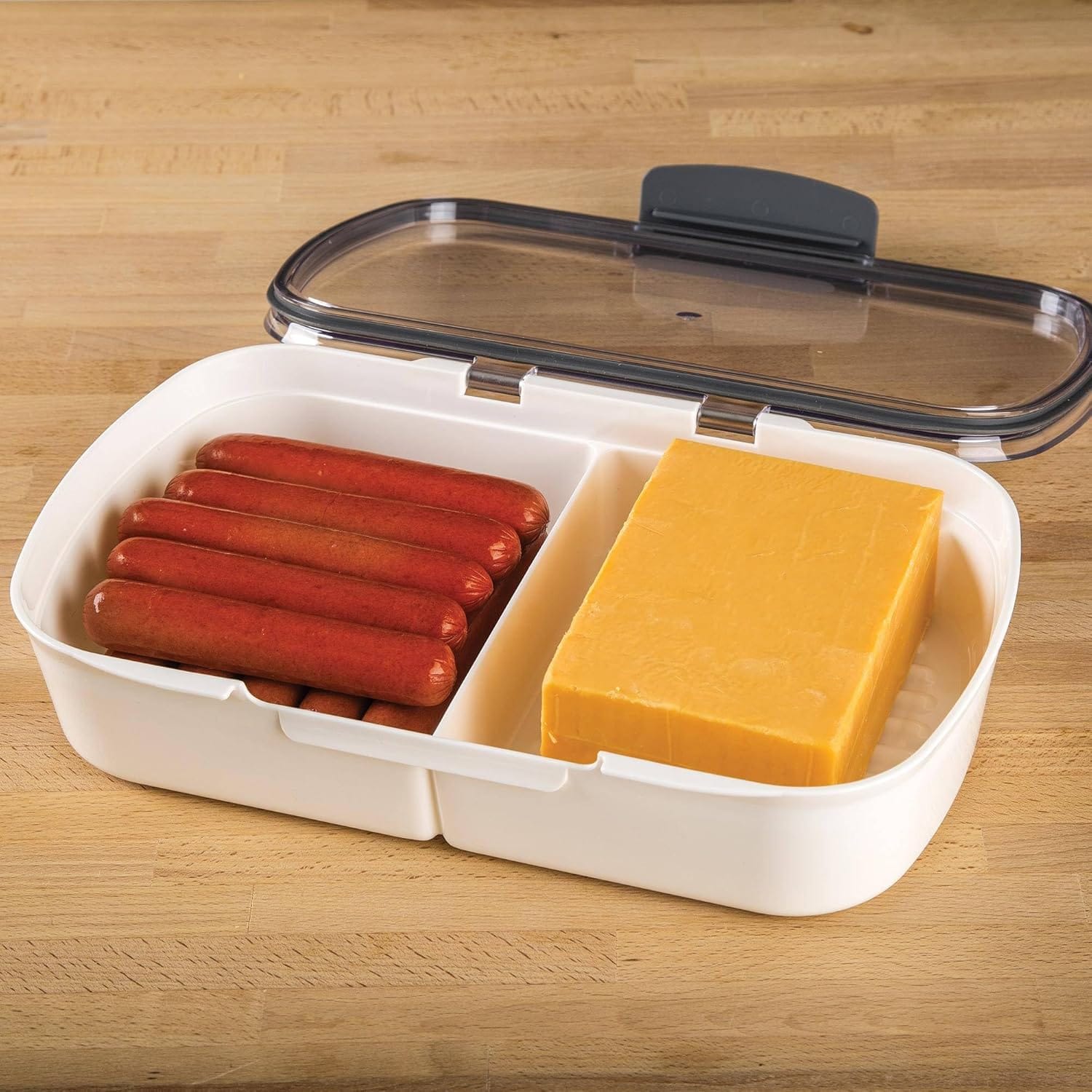
Encouraging Review
"Ordered two of these. They have clear lids so it's easy to see which type of lunch meat is inside without having to open them. Some reviews have mentioned the plastic latch breaks easily. The liid has a rubber seal that fits tightly, so I just press close and don’t snap the latch. Keeps lunch meat fresh. Stackable and keeps frige neat." Amazon Review by SETX Shopper
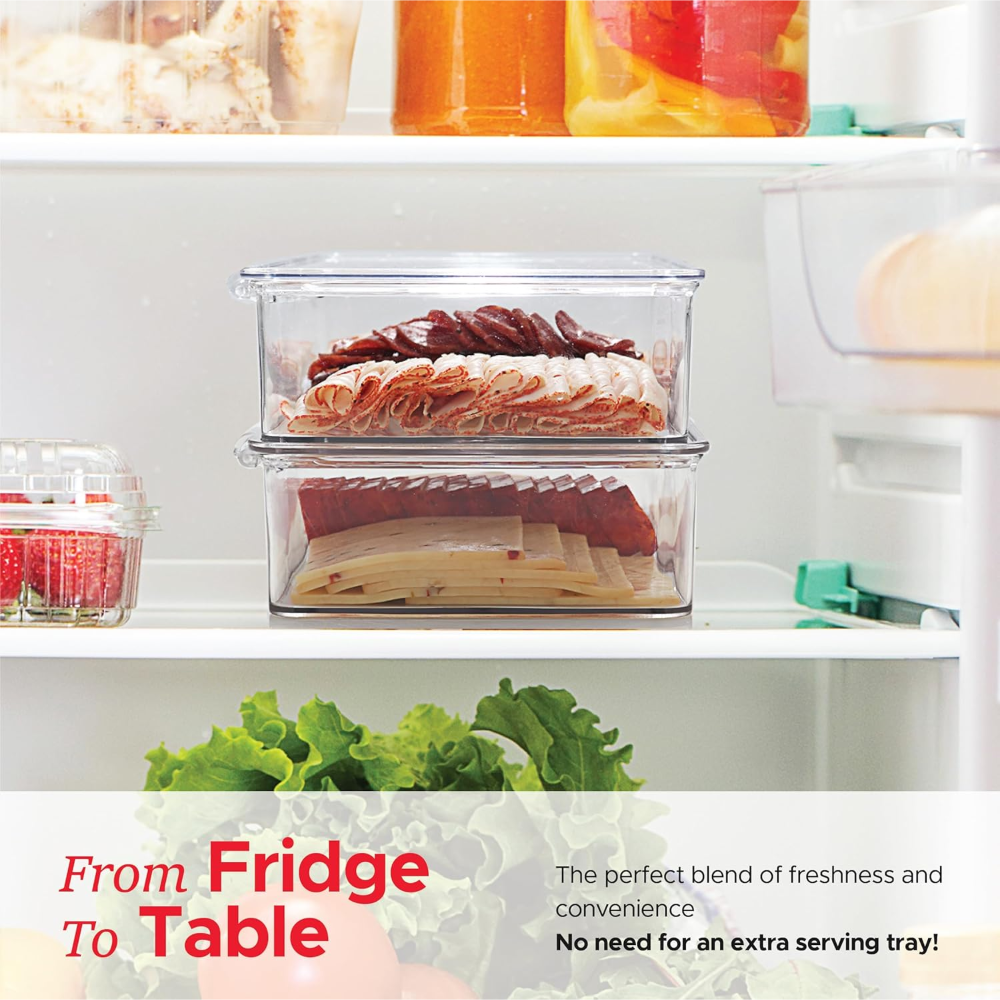
Tafura Bacon Container For Refrigerator (2 Pack)
Bacon Storage Container | Cheese & Deli Storage Container
Why We Love This
Our bacon container is designed to keep your deli meats, bacon, and cheese at peak freshness. Say goodbye to messy refrigerators caused by torn cold-cut bags. Ensure your food stays fresh and your fridge stays clean with our reliable storage solution.
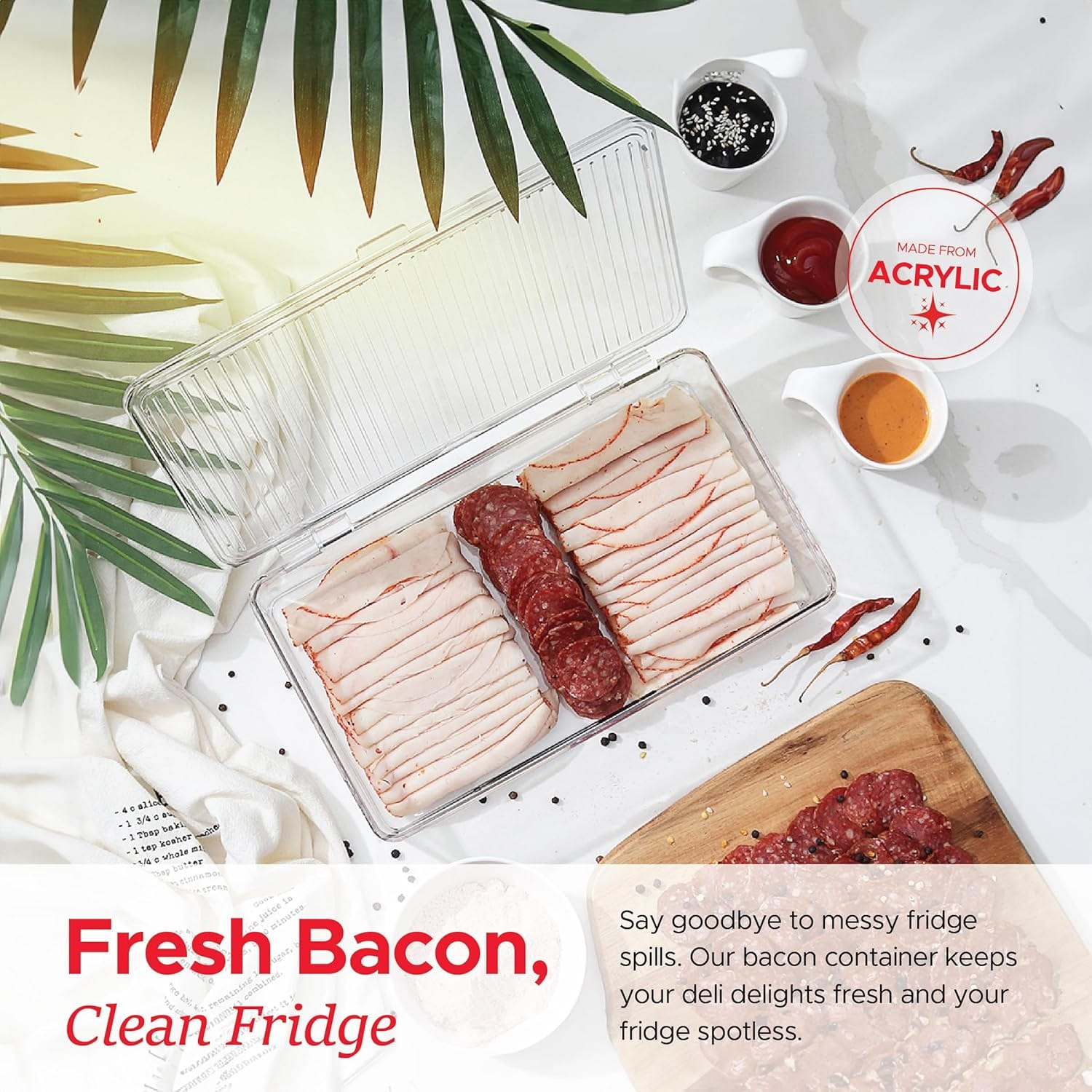
Encouraging Review
"I use this for meat and cheeses in my refrigerator and it it fits great in my middle drawer." Amazon Review by Terri Moore

AIEVE Ham and Cheese Container for Fridge
Silicone Sealed Lunch Meat Storage Container for Fridge with Clear Lids, 8.86 Inches Long
Why We Love This
Two compartments let you store both meat and cheese. You can keep different foods apart this way. This keeps your food fresh. Enjoy tasty food when you want.
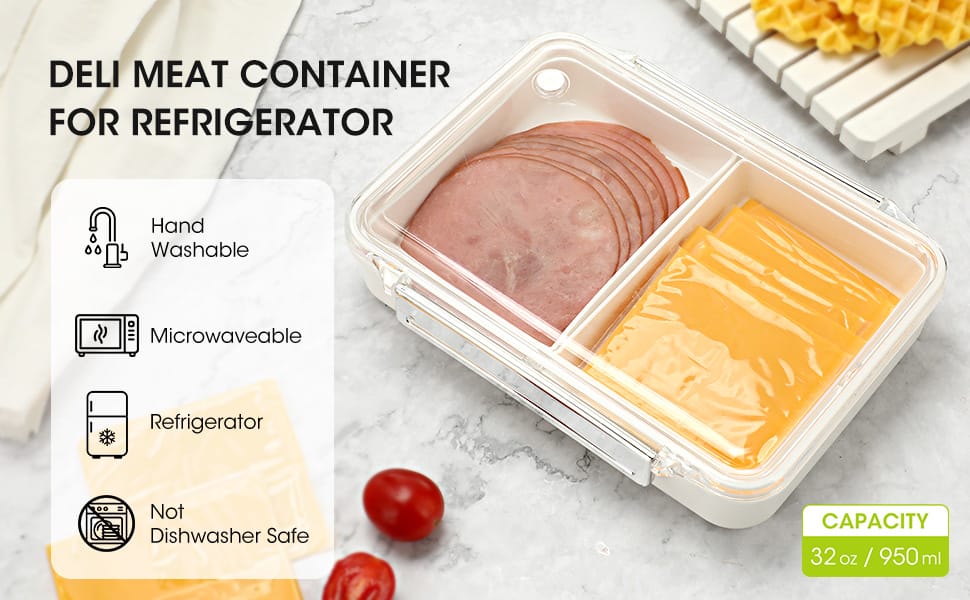
Encouraging Review
"Excellent product. It holds my lunchmeat and cheese perfectly." Amazon Review by Jane Hanser
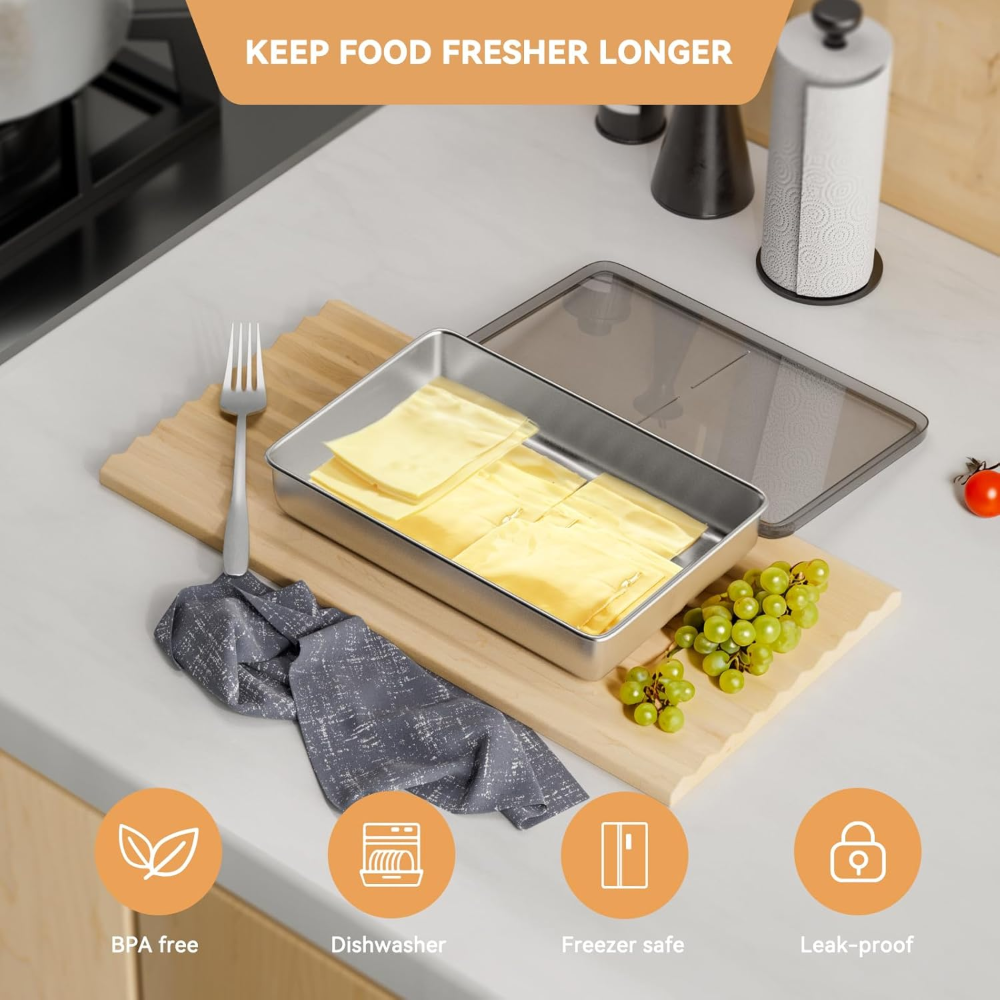
Freshmage Cheese Container for Refrigerator
Stainless Steel Airtight Deli Meat Storage Containers for Fridge Dishwasher Safe
Why We Love This
Our new deli meat container keeps food fresh. It's sealed tight to lock in flavor. The bottom has a raised pattern to keep meat off the base. This stops food from getting soggy. It creates a better spot to store food.
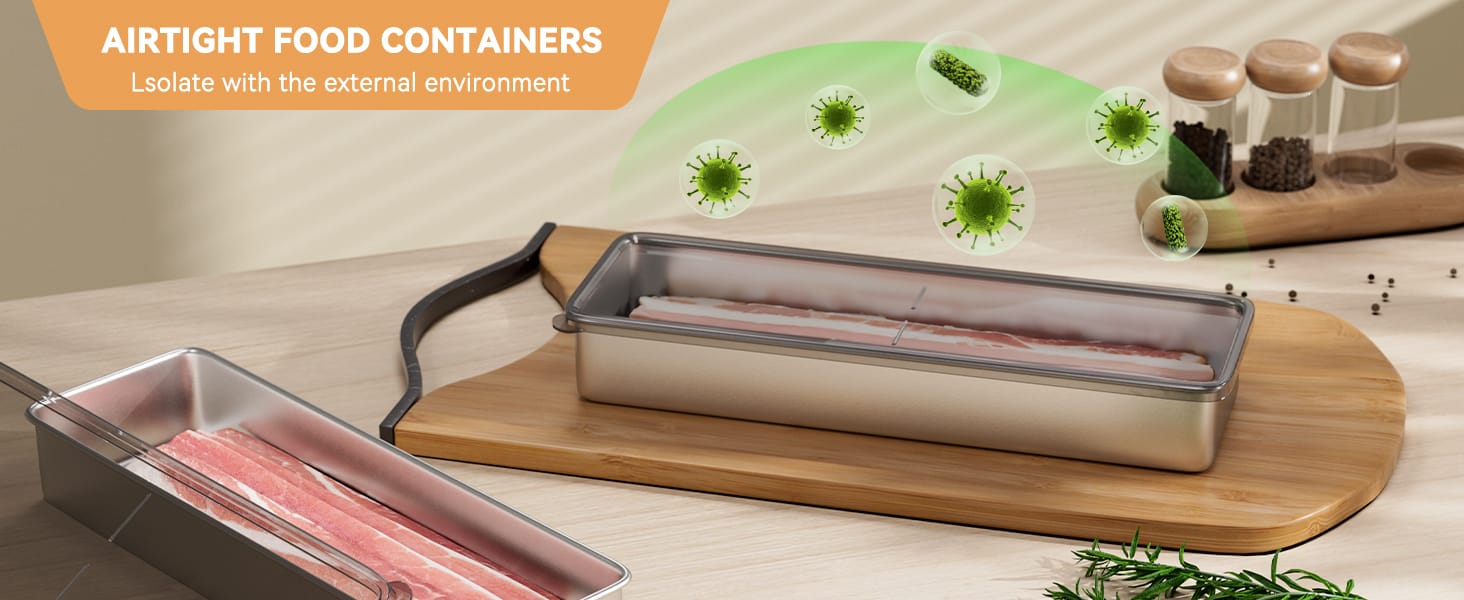
Encouraging Review
"Finally, the right size for bacon in the refrigerator. Works great to keep the meat fresh. Easy to clean. Also bought the square one for cheese and lunch meats. Use it for my smoked salmon too. Love these containers!" Amazon Review by JWE
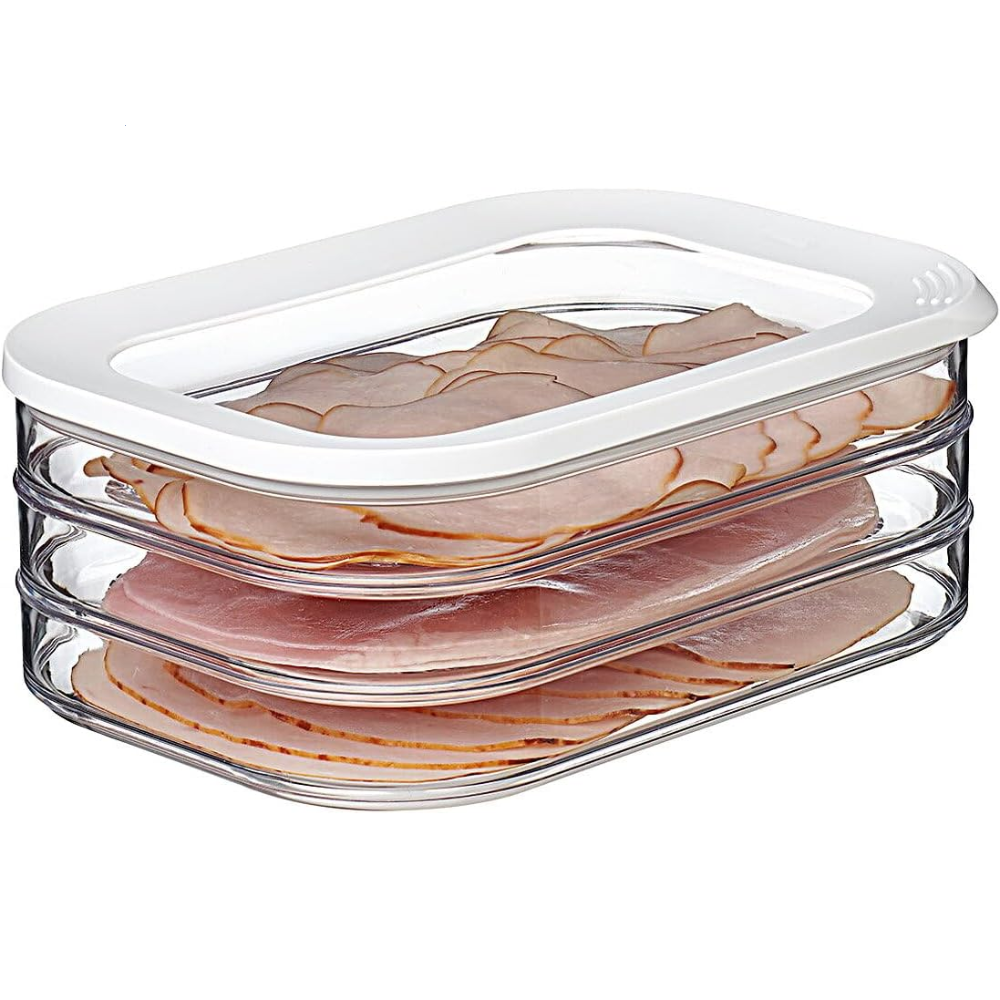
Mepal Modula Rounded Food Storage Box with Lid Set of 3
Ideal for Cold Cuts, Cheese, and More
Why We Love This
Need neat fridge storage? The Mepal Modula box set is your answer. It's great for salami, turkey, chicken, and cheese. These three boxes keep your meats fresh and your kitchen tidy. You'll love how simple organization becomes.
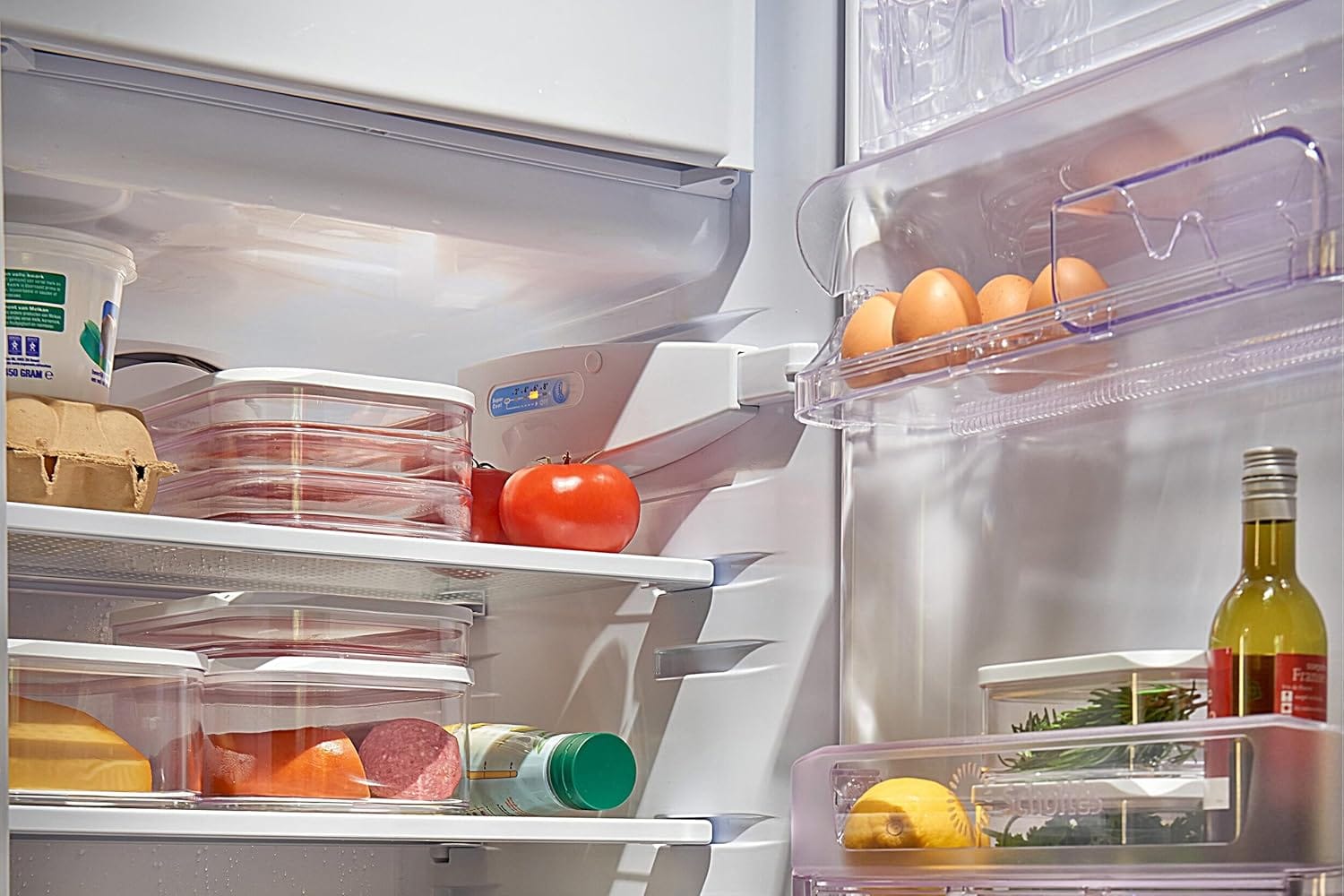
Encouraging Review
"Having a large family, you need this in your life. Keeps meats and cheeses separated, sorted and fresh. Great quality for the price and size." Amazon Review by Kendra Stubbs
Summary
Storing lunch meat properly is essential for maintaining its freshness and ensuring food safety. By understanding the different types of lunch meat and their specific storage needs, you can extend their shelf life and reduce waste. From temperature control and packaging to recognizing signs of spoilage, each step plays a vital role in preserving the quality of your lunch meat. Regular cleaning and creative use of leftovers further enhance your ability to enjoy fresh and delicious meals.
FAQ
Q1: How long can lunch meat be stored in the fridge?
A1: Lunch meat can typically be stored in the fridge for 3 to 5 days after opening. It's important to keep it in airtight packaging and at a temperature below 40°F (4°C) to maximize freshness.
Q2: Can I freeze lunch meat, and if so, for how long?
A2: Yes, lunch meat can be frozen for up to two months. Ensure it's wrapped tightly in plastic wrap or aluminum foil and placed in a freezer-safe bag or container to maintain quality.
Q3: What are the signs that lunch meat has gone bad?
A3: Spoiled lunch meat often has a sour smell, slimy texture, and discoloration. If you notice any of these signs, it's best to discard the meat to avoid foodborne illnesses.

